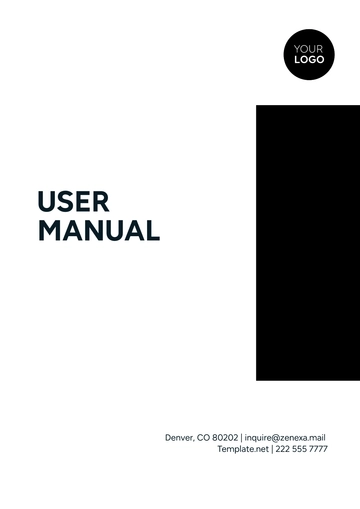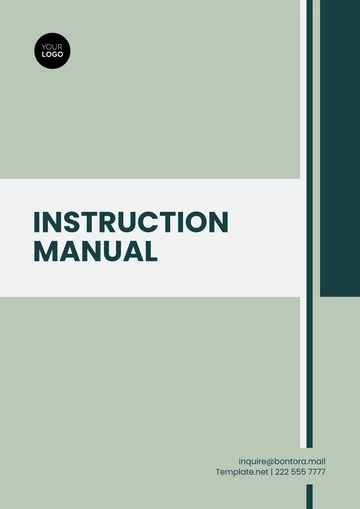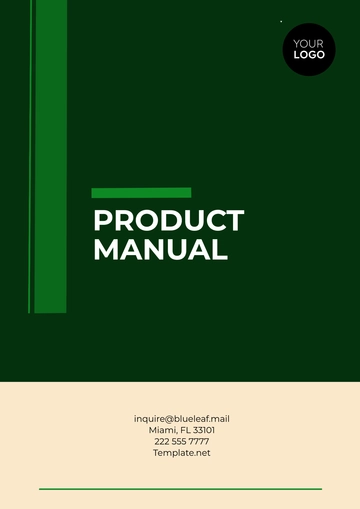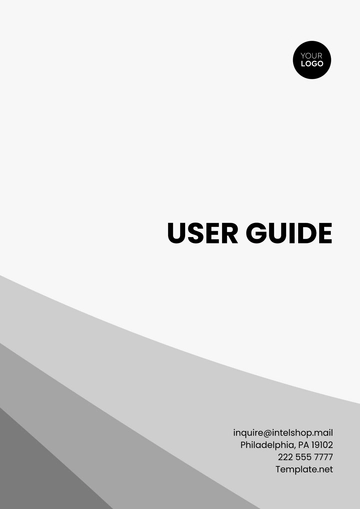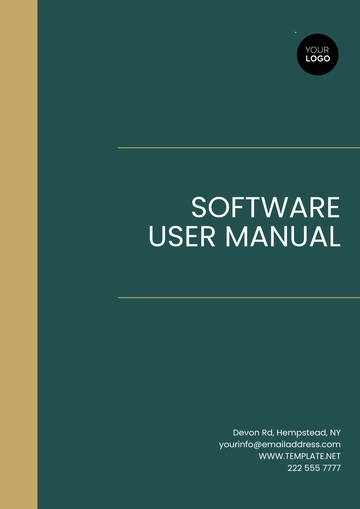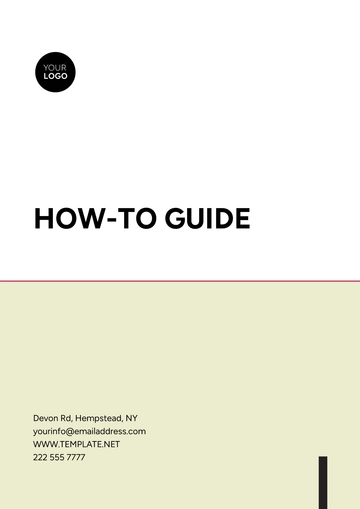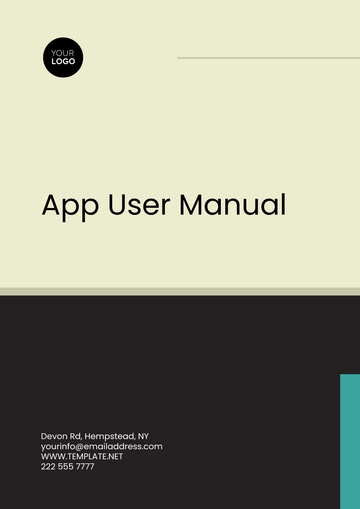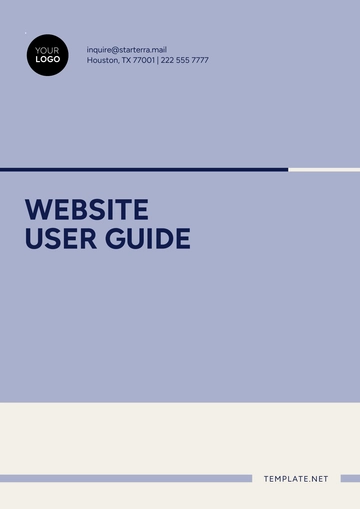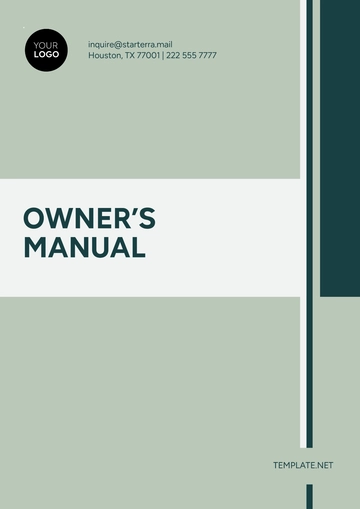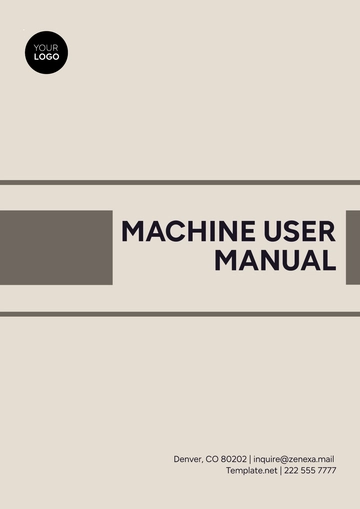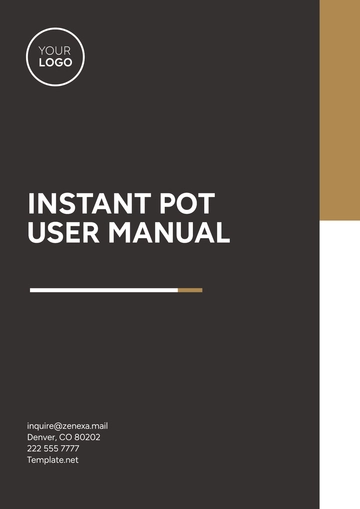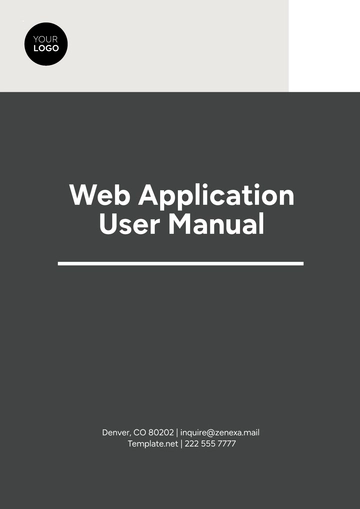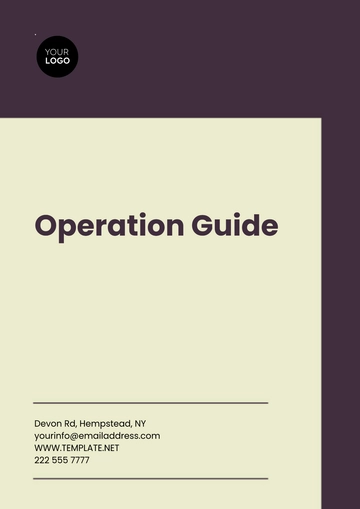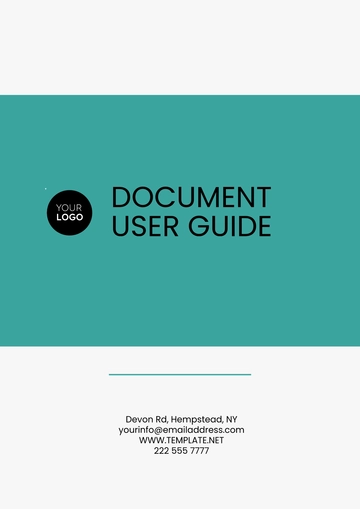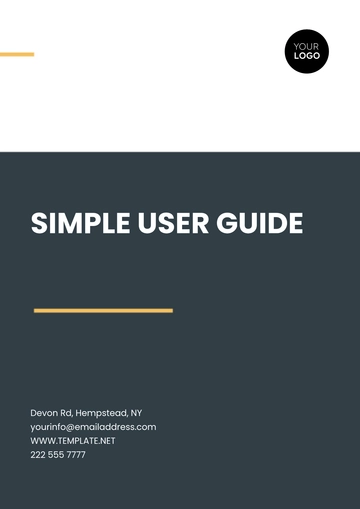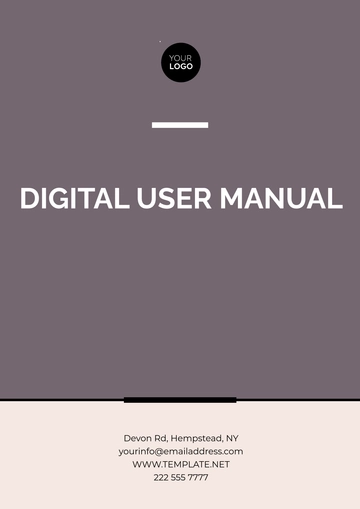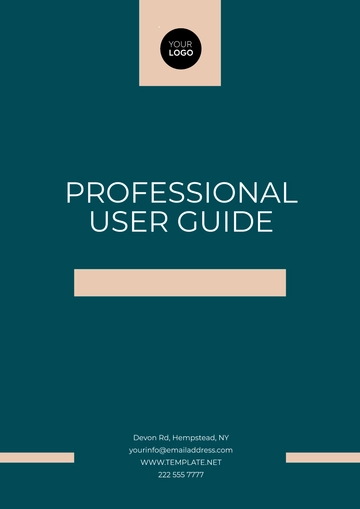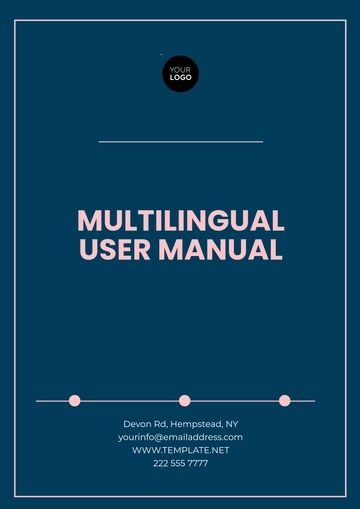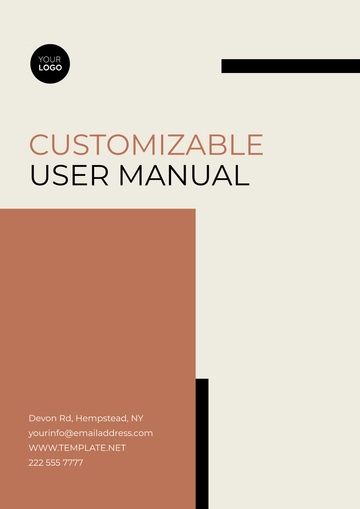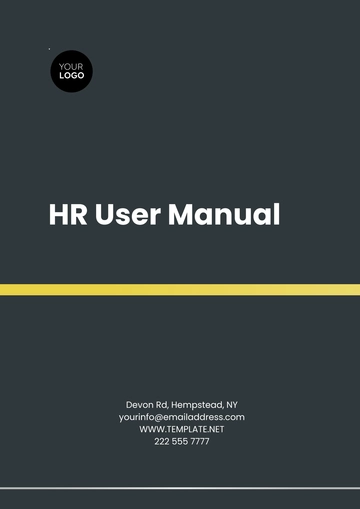Free PPE User Manual
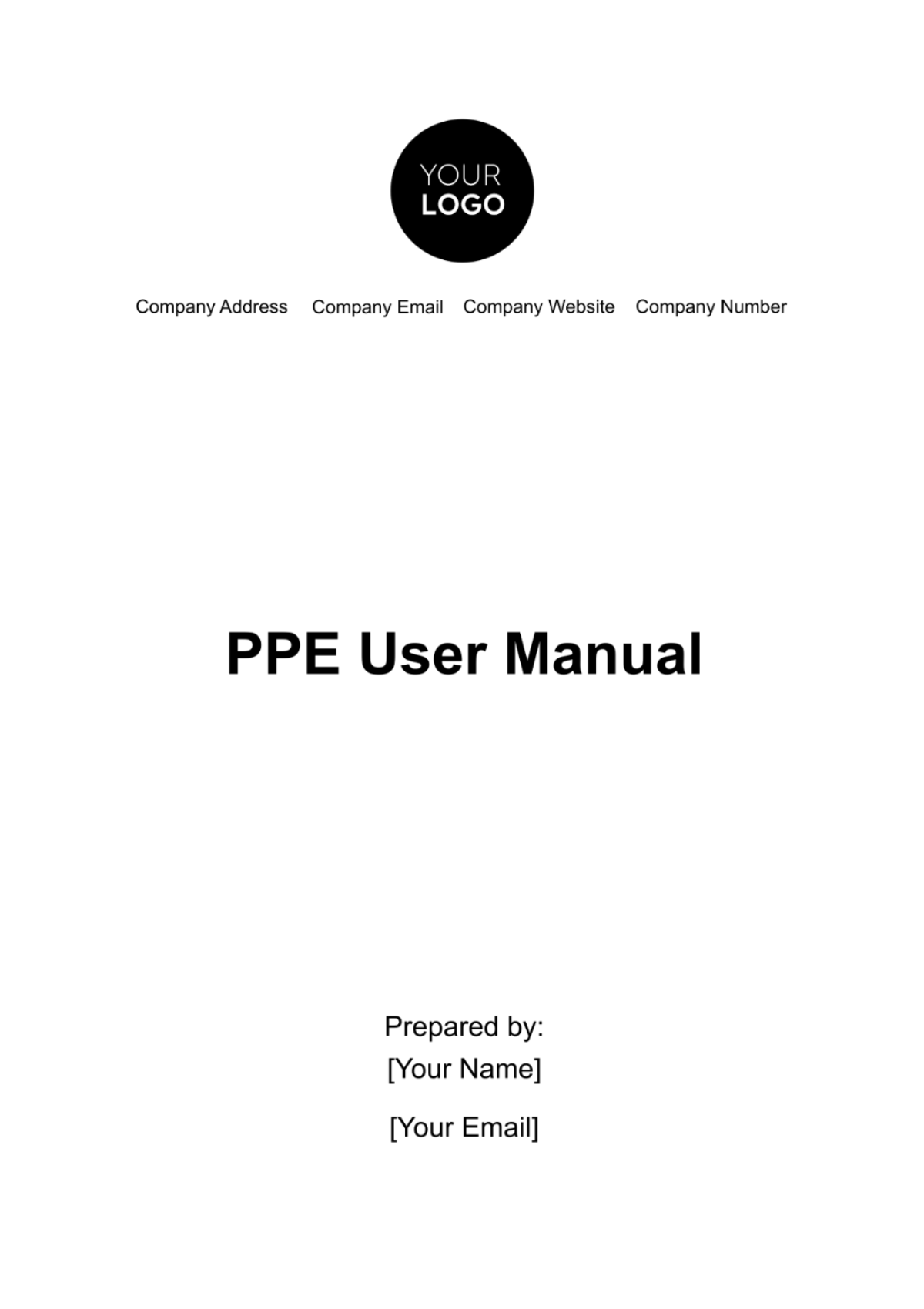
Introduction
A. Purpose
The purpose of this Personal Protective Equipment (PPE) User Manual is to ensure the safe and effective utilization of our PPE products. It aims to empower users with a comprehensive understanding of the equipment, its features, and the necessary precautions to safeguard their well-being while using our products.
B. Scope
This manual is all-encompassing, covering various aspects related to our PPE products. It encompasses installation instructions, operational guidelines, maintenance procedures, and vital safety precautions. It serves as a reference point for users to address any concerns, ensuring a smooth and secure experience.
C. Audience
This user manual caters to a broad audience, including employees, contractors, and customers who interact with our PPE products. It addresses both novice users who are new to the equipment and experienced individuals seeking to refresh their knowledge. By accommodating diverse audiences, we aim to promote universal adherence to safety protocols.
D. Revision History
To maintain the relevance and accuracy of this manual, it undergoes periodic revisions. The revision history table below tracks these updates:
Revision | Date | Description | Author |
1.0 | 2050-01-01 | Initial Release | [Your Name] |
Safety Information
A. General Safety Precautions
Your safety is paramount, and adhering to these general safety precautions is fundamental to using our PPE products responsibly:
Training: Before utilizing any PPE, undergo thorough training to familiarize yourself with its functions and limitations. Seek guidance from experienced individuals or trainers.
Regulations: Always comply with safety regulations and guidelines relevant to your workplace or industry. These standards are in place to safeguard you and your colleagues.
Equipment Care: Maintain your PPE in optimal condition. Regularly inspect it for signs of wear and tear, and promptly address any issues to ensure its reliability.
B. PPE Selection Criteria
Selecting the appropriate PPE for your specific task or environment is critical to your safety. Consider the following criteria:
Hazard Assessment: Identify the potential hazards you may encounter during your work. These could include chemical exposure, electrical risks, or physical injuries.
PPE Compatibility: Ensure that the selected PPE is compatible with the hazards you face. It should provide adequate protection against the identified risks.
Fit and Comfort: A well-fitted PPE enhances comfort and safety. Always choose PPE that suits your body size and preferences.
Standards Compliance: Verify that the PPE meets the required safety standards and certifications for your industry.
C. Donning and Doffing PPE
Properly donning (putting on) and doffing (taking off) your PPE is crucial to minimize contamination risks and maintain its effectiveness:
Training: Attend training sessions to learn the correct procedures for donning and doffing your specific PPE. Practice these procedures until they become second nature.
Hygiene: Maintain good hand hygiene before and after handling your PPE. Use hand sanitizers or wash your hands thoroughly.
Sequence: Follow the recommended sequence for donning and doffing, which may vary depending on the type of PPE you are using.
D. PPE Inspection and Maintenance
Regular inspections and proper maintenance are essential to keep your PPE in peak condition:
Routine Checks: Perform routine visual inspections before and after each use. Look for signs of damage, wear, or contamination.
Maintenance Schedule: Follow the manufacturer's maintenance schedule to ensure the longevity of your PPE. Regularly clean, disinfect, and replace parts as needed.
Documentation: Maintain records of inspections and maintenance activities. This documentation is essential for tracking the condition of your PPE over time.
E. Emergency Procedures
Prepare for emergencies by understanding the appropriate response when using PPE:
Emergency Shutdown: Familiarize yourself with emergency shutdown procedures specific to your equipment. Know how to quickly power off or disable the PPE in case of a malfunction or hazardous situation.
Communication: Always have a backup communication device or method available in case your primary means of communication fails while wearing PPE.
Evacuation: Understand evacuation routes and procedures in your workplace. Know how to evacuate safely while wearing PPE, and be aware of designated assembly points.
Product Information
A. [Product Name]
This section provides specific details about the PPE product you are using:
Product Description: [Product Name]
Model Number: SV-2022
Manufacturing Date: July 15, 2052
Getting Started
Before you begin using your PPE, it's crucial to understand how to set it up, adjust it for your comfort and safety, and complete any necessary registration or initial steps.
A. Unboxing and Contents
Upon receiving your PPE, follow these steps to ensure everything is in order:
Open the Package: Carefully open the package, taking care not to damage any components inside.
Check Contents: Verify that all the items listed in the user manual or packaging checklist are present. This may include the PPE unit, accessories, user manual, and any required cables or chargers.
Inspect for Damage: Examine all components for any signs of damage that may have occurred during shipping. If you notice any issues, contact [Your Company Name] immediately.
B. Initial Setup
Setting up your PPE correctly is vital for its optimal performance and your safety. Follow these steps:
Read the User Manual: Before proceeding, thoroughly read the user manual provided with your PPE. It contains essential setup instructions and safety information.
Charge the Battery: If your PPE has a rechargeable battery, ensure it is fully charged before use. Connect it to a compatible charger and allow it to charge according to the manufacturer's recommendations.
Power On: Follow the instructions in the user manual to power on your PPE for the first time. Ensure that it starts up without any errors or issues.
C. Adjusting PPE for Proper Fit
To maximize comfort and safety, adjust your PPE to fit your body properly:
Refer to User Manual: Consult the user manual for guidance on adjusting straps, harnesses, or other fitting components specific to your PPE.
Practice Donning: If applicable, practice donning your PPE, ensuring a secure and snug fit. Pay attention to any provided instructions regarding adjustments.
Comfort Test: Wear the PPE for a brief period to assess its comfort and fit. Make any necessary adjustments to ensure it is comfortable for extended use.
D. User Registration
Registering your PPE is essential for warranty coverage and customer support:
Follow Registration Process: Review the user manual or visit [Your Company Website] for information on how to register your PPE. Registration typically involves providing your product's serial number and contact information.
Retain Documentation: Keep a copy of your registration confirmation and any associated warranty documents for your records. This will assist in the event you need to claim warranty services or support.
Using the PPE
In this section, you will learn how to effectively use your [Product Name] (Model SV-2022). It covers powering on/off, navigating the controls, understanding product features and functions, and troubleshooting common issues.
A. Powering On/Off
To ensure your safety while using the [Product Name], it's crucial to know how to power it on and off correctly:
Powering On: Locate the power button on your vest (typically located on the front or side). Press and hold the button for a few seconds until you see the power indicator light up. Release the button, and the vest will start up.
Powering Off: To power off the vest, press and hold the same power button for a few seconds until the power indicator turns off. Release the button, and the vest will shut down.
B. Navigating the Controls
Your [Product Name] may have additional controls and settings, depending on its features. Refer to the user manual for specific details on navigating controls such as brightness adjustment, mode selection, or connectivity settings.
C. Product Features and Functions
Understanding the features and functions of your safety vest is essential for its effective use:
High Visibility: The vest is designed to make you highly visible, especially in low-light conditions. Be aware of the visibility range and ensure it meets the safety requirements of your work environment.
Reflective Strips: Check for reflective strips on the vest. These strips enhance visibility when illuminated by external light sources.
Pockets and Compartments: If your vest has pockets or compartments, learn how to use them for storing small items or tools safely.
Lighting Modes: Familiarize yourself with the different lighting modes your vest may offer, such as steady, flashing, or SOS signals.
D. Troubleshooting
In the event of any issues or malfunctions with your [Product Name], consult the user manual for troubleshooting guidance. Common troubleshooting steps may include:
Check Battery: Ensure the battery is charged and properly inserted.
Inspect Wiring: Examine the wiring and connections for any loose or damaged components.
Resetting: Some vests may have a reset option. Refer to the manual for instructions on how to perform a reset.
Contact Support: If troubleshooting doesn't resolve the issue, contact [Your Company Name] or your partner company for further assistance.
Maintenance and Care
Proper maintenance and care of your [Product Name] (Model SV-2022) are essential to ensure its longevity and continued effectiveness in providing safety. This section details the necessary steps for maintenance, cleaning, battery replacement, storage, and how to address repairs and service.
A. Cleaning and Disinfecting
To maintain the cleanliness and hygiene of your safety vest:
Regular Cleaning: Depending on your usage, clean the vest regularly using a damp cloth. Avoid using abrasive cleaners or solvents.
Disinfecting: If required, disinfect the vest following the manufacturer's recommendations, especially if you use it in healthcare or high-contamination environments.
B. Battery Replacement
Your safety vest may have a rechargeable battery. Follow these steps to replace the battery when needed:
Identify Battery Compartment: Locate the battery compartment on your vest. It may be secured with screws or snaps.
Remove Old Battery: Carefully remove the old battery by following the instructions in the user manual.
Insert New Battery: Insert the new battery following the correct polarity indicated in the battery compartment.
Secure Compartment: Close and secure the battery compartment, ensuring it is properly sealed.
C. Storage
Proper storage helps maintain the integrity of your safety vest:
Clean Before Storage: Before storing the vest, ensure it is clean and dry.
Store in a Cool, Dry Place: Store the vest in a cool, dry place away from direct sunlight, moisture, or extreme temperatures.
Avoid Compression: Avoid compressing or folding the vest in a way that may damage reflective strips or wiring.
D. Repairs and Service
In case your safety vest requires repairs or servicing:
Authorized Service Centers: Contact [Your Company Name] or your partner company for information on authorized service centers.
Warranty Coverage: Check your warranty information for coverage details. Some repairs may be covered under warranty.
Do Not Attempt DIY Repairs: Avoid attempting to repair the vest yourself, as it may void the warranty or compromise safety.
Regulatory Compliance
This section highlights the regulatory aspects related to your [Product Name] (Model SV-2022). It provides information about compliance standards, declarations of conformity, FCC compliance, and CE marking.
A. Compliance Standards
Your safety vest complies with industry-specific safety standards to ensure its effectiveness in protecting you in various environments. The following standards may be relevant:
ANSI/ISEA 107-20XX: This standard specifies requirements for high-visibility safety apparel, including vests, to enhance the visibility of wearers in low-light conditions.
OSHA Standards: Depending on your workplace, the vest may also adhere to Occupational Safety and Health Administration (OSHA) standards for personal protective equipment (PPE).
B. Declarations of Conformity
A Declaration of Conformity is a formal statement by the manufacturer that the product meets all relevant safety and performance requirements. Your safety vest should have a Declaration of Conformity to certify its compliance with applicable standards.
Location: You can typically find the Declaration of Conformity in the user manual or on the product packaging.
Contents: The declaration includes information about the product, manufacturer, standards it complies with, and the signature of an authorized representative of the manufacturer.
C. FCC Compliance
If your [Product Name] incorporates wireless communication features or electronic components, it may need to comply with Federal Communications Commission (FCC) regulations in the United States.
FCC ID: Check for an FCC ID on the vest or in the user manual. This ID confirms that the product complies with FCC requirements for electromagnetic interference and wireless communication.
User Information: The user manual should provide information on FCC compliance, including any restrictions or guidelines for the use of wireless features.
D. CE Marking
The CE marking signifies that your safety vest complies with the essential requirements of European Union (EU) directives. It allows the product to be legally placed on the EU market.
CE Mark: Look for the CE mark on the vest or its packaging. It indicates that the product meets EU safety and environmental requirements.
User Manual: The user manual may include information related to CE marking, such as the manufacturer's address in the EU and relevant directives.
Customer Support
This section outlines the customer support resources available to you as a user of the [Product Name] (Model SV-2022). It covers contact information, warranty details, returns and exchanges, and frequently asked questions (FAQs).
A. Contact Information
Should you require assistance or have inquiries about your safety vest, our customer support team is here to help:
Customer Support: Contact our customer support team at [Your Company Number] or [Your Company Email]
Technical Assistance: For technical issues or questions, reach out to our technical support team at [Your Company Website].
Partner Company Support: If you obtained your vest through a partner company, you can also contact them for support.
B. Warranty Information
Understanding your warranty coverage is essential:
Warranty Period: Your [Product Name] (Model SV-2022) comes with a [1]-year warranty. Check your warranty certificate or user manual for specific details.
Warranty Claims: If you experience any defects or issues covered by the warranty, contact our customer support to initiate a warranty claim.
C. Returns and Exchanges
We aim to ensure your satisfaction with your safety vest:
Return Policy: Review our return policy outlined in the user manual or on our website for information on returning or exchanging the product.
Conditions: Ensure the vest is in its original condition and packaging to qualify for returns or exchanges.
Additional Resources and Information
In addition to this user manual, there are additional resources and information available to support you in using your [Product Name] (Model SV-2022) effectively and safely.
A. Training and Education
To ensure your competence in using the safety vest and understanding safety protocols, consider the following resources:
Training Programs: Enroll in training programs or courses related to the safe use of high-visibility safety apparel and personal protective equipment. These programs can provide hands-on training and valuable insights.
Safety Workshops: Participate in safety workshops and seminars offered by your workplace or industry associations. These events can enhance your knowledge of safety practices.
B. User Community
Joining a user community or forum related to safety gear and personal protective equipment can be beneficial:
Online Forums: Explore online forums or communities where users share their experiences and knowledge about safety vests and related equipment. These platforms are great for seeking advice and exchanging tips.
C. Product Updates and Notifications
Stay informed about product updates and important notifications:
Product Updates: Periodically check our website or contact our customer support for any product updates, recalls, or improvements related to your safety vest.
D. Feedback and Suggestions
Your feedback and suggestions are valuable to us. If you have any comments, ideas, or recommendations regarding our safety vest or this user manual, please feel free to reach out to us:
Feedback: Contact our customer support or visit our website to provide feedback. We appreciate your input and are continually working to enhance our products and user resources.
- 100% Customizable, free editor
- Access 1 Million+ Templates, photo’s & graphics
- Download or share as a template
- Click and replace photos, graphics, text, backgrounds
- Resize, crop, AI write & more
- Access advanced editor
Equip your workforce with the necessary knowledge using Template.net's PPE User Manual Template. This editable and customizable manual provides comprehensive guidance on the proper use of Personal Protective Equipment (PPE). Utilize our intuitive Ai Editor Tool to tailor the manual to your organization's specific needs effortlessly, ensuring safety and compliance.
